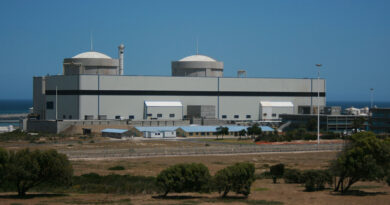How to deal with digital revolution at steelmaking plants
In the steelmaking industry, a significant portion of operating costs is related to the use of electricity, natural gas, cryogenics and various other energy sources. Thus, promoting energy efficiency, both in terms of use and co-generation, as well as making operational efforts fit with energy planning and with the management of energy contracts become key to competitiveness. Furthermore, ensuring the effective use of these resources is fundamental to promoting sustainability of the business both in financial terms and in relation to its environmental impact.
According to the World Steel Association, the base metals industry invests nearly 20-40% of its total operating costs in energy, a level of use that in 2023 accounted for 12% of the world’s energy usage. At the same time, pressures to decarbonize steel production constitute another major challenge. In 2022, the steelmaking industry was responsible for 7-9% of all CO2 emissions worldwide, which is the equivalent of 1.85 tons of gas for every ton of steel produced. The Carbon Disclosure Project organization has estimated that, on average, 14% of the value of steelmaking companies is at risk with the increase in carbon prices.
Integrated steelmaking plants are highly complex in terms of their production processes, operations and, in particular, their matrix of energy sources. Commonly, dozens of types of energy and utilities are purchased, distributed, consumed and converted into other sources to support hundreds of machines in various production processes. The inherent complexity of this scenario, however, can be matched up with existing opportunities for the rational use of these resources, whether by promoting the efficiency of the processes, by reducing losses, by re-using coke plant, blast furnace and steelworks gases, or by achieving high levels of water recirculation, among other examples.
Likewise, the procurement of resources such as electric power, natural gas and cryogenics is governed by supply contracts that have specific rules for pricing, including seasonal factors, minimum limits and fines, among other factors that significantly affect the final costs. In this sense, a proper balance between the demand of production processes for energy resources and their procurement, supply and distribution can also be turned into a major factor for the rationalization of costs.
Taking advantage of such opportunities, however, requires a high degree of coordination, discipline and agility – factors that can be greatly enhanced by digital technologies involving: (1) the acquisition of data on variables related to the production processes, information on production planning and implementation, administrative information on costs and contracts; (2) the processing of those data as indicators of energy yield and the management of that yield; (3) the analysis, modeling and simulation of processes in order to find and implement yield improvement actions; (4) the planning and pricing of the procurement, use and conversion of energy, including the possibility of its co-generation and commercialization; and (5) monitoring of the costs involved at a level of detail suitable for their management.
In order to confront these challenges and increase energy efficiency in integrated steelmaking plants, online monitoring of energy flow data can be used, thus enabling immediate maintenance and improvement of control of the processes and thus avoiding energy losses. In addition, continuous monitoring of emissions can serve to quantify emission and management their means of abatement.
Data acquisition, processing and analysis can provide for a better forecast of production process behavior, as well as more intelligent, easier and faster decision-making. A combination of devices equipped with sensors, software and wireless systems, together with a growing capacity for data collection and storage, leads to the availability of new sources of data for modern analytic technologies for faster and more detailed data pre-processing.




